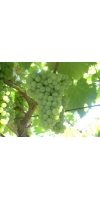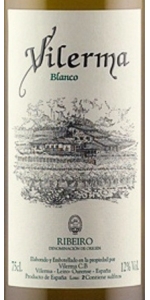Treixadura

Treixadura is a Portuguese white wine grape that is predominately grown is the Vinho Verde wine region in northeast Portugal. The grape is primarily used for blending which introduces body and light lemony aromatics to Loureiro and Alvarinho. It is also often blended with Lado and Torrontes. The lightly scented white grape can also stand alone producing light-bodied wines with citrus flavors and aromas. Treixadura is a high quality grape that is also known as Trincadiera. Originally from the moncao sub-region Treixadura produces wines with a distinctive aroma. Although they can sometimes be unbalanced, they are very flavorful. Treixadura has a lower acid level with higher alcohol levels and is used to balance and blend with other Vinho Verde varietals. The grape ripens early and produces soft and fragrant wines with a strong citrus flavor. When pruned and maintained properly, Treixadura produces herbal and apple aromas with good acidity. The full-bodied wines feature mineral flavors. Treixadura prefers soils that are covered with slate, but should be planted in regions that have cool growing seasons. Treixadura must be harvested with the acidity has reached its peak as the sugar development can be rapid overpowering the acidity.
Vilerma Blanco Ribeiro is made from 80% Treixadura, 6% Torrontes, 4% Godello, 4% Albariño, 3% Loureira and 3% Lado
Ribeiro blanco is produced from estate-grown grapes using traditional winemaking.
Pale yellow color with green highlights.
Intense white fruit aromas when young, it develops complex nuances after a few years in the bottle.
In the mouth it is ample, full and pleasant with a long and fruity finish.
Fermentation in Stainless Steel tank at controlled temperature.
- back
Selected Options
Grape Types
Categories
Pricing
Countries
Regions
Grape Types
Wineries
Organic/Free Shipping
Ruffino Alauda Toscana IGT is made from 40% Cabernet Franc, 35% Merlot, 25% Colorino.
An elegant, full-bodied wine, Alauda is a harmonious sum of its parts. Rich with varietal flavors of plum and cherry from the Merlot and layered with ripe berry flavors from the Cabernet Franc, and unique balsamic and dark chocolate notes from the Colorino. The extended oak aging process integrates the blend while providing tertiary flavors of sweet spice and soft, elegant tannins for a lingering finish. This wine will age gracefully for decades.
DAOU Vineyards Soul of a Lion is made from 80% Cabernet Sauvignon, 13% Cabernet Franc, 7% Petit Verdot .
The 2020 vintage presents an alluring profusion of black cherry, mulberry and Oregon blackberry aromas with notes of leather, cigar box and dark chocolate. Hints of desert sage and crème de menthe accent the rich fruit. The palate is silky and voluptuous, delivering loads of currant, cassis, black raspberry and ripe cherry. Notes of fig and baking spice are underscored by earthy tones of dates and truffle. Mature, ripe tannins yield a weighty, velvety texture integrated with a limestone minerality and subtle oak. A lengthy finish leaves lingering impressions of blackberry, plum and espresso with a touch of white pepper. A wine of immense staying power that will evolve favorably for many years to come.
Review:
Impressively dark in the glass, this bottling pairs intense purple fruit and flower on this nose with more roasted, umami-laden aromas. The elegant palate is a master class in tannin management, proving firm in structure yet soft in mouthfeel. Flavors of blackberry jam, cocoa, walnut and cracked pepper ride a lingering acidity into the finish.
-Wine Enthusiast 97 Points





